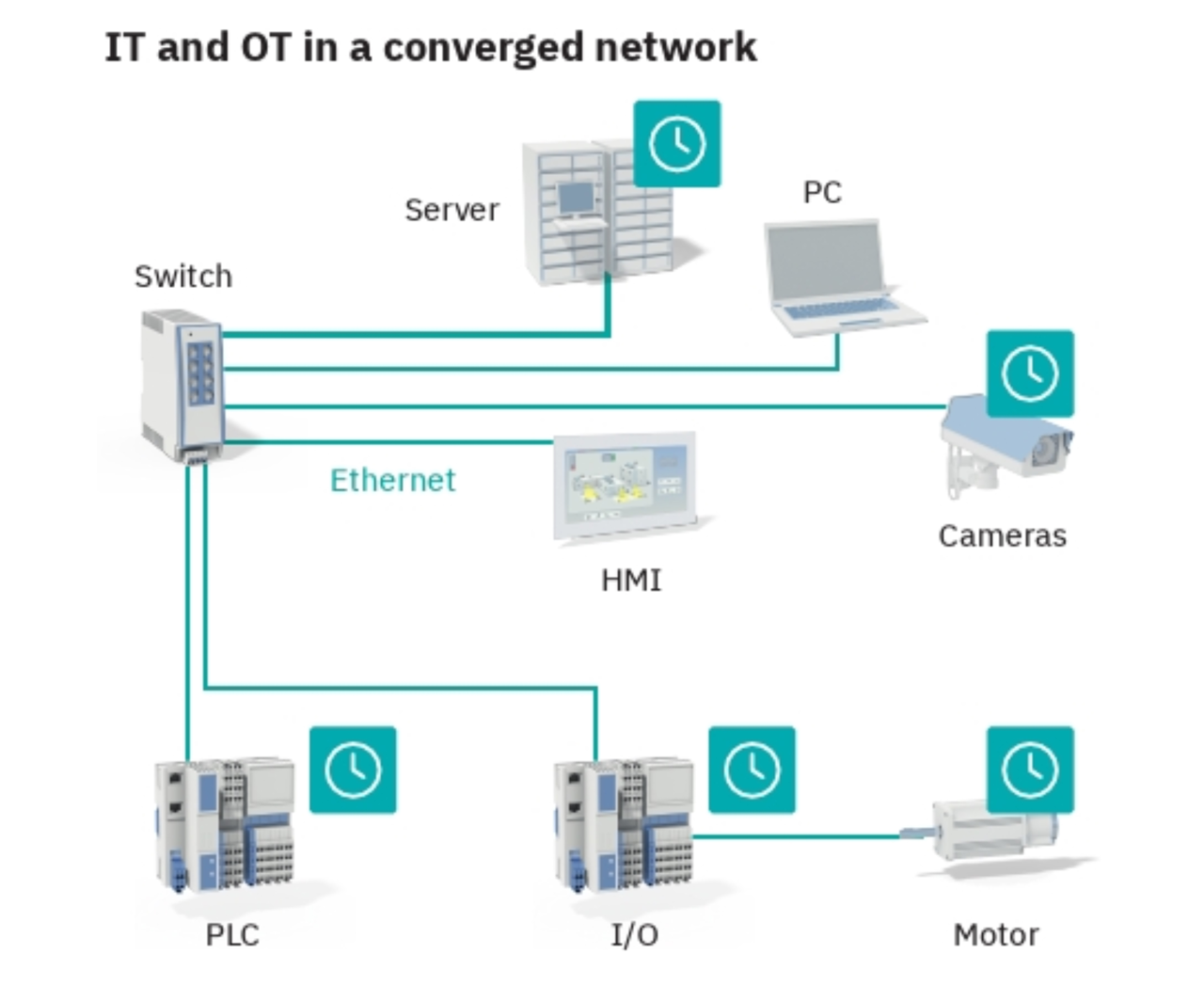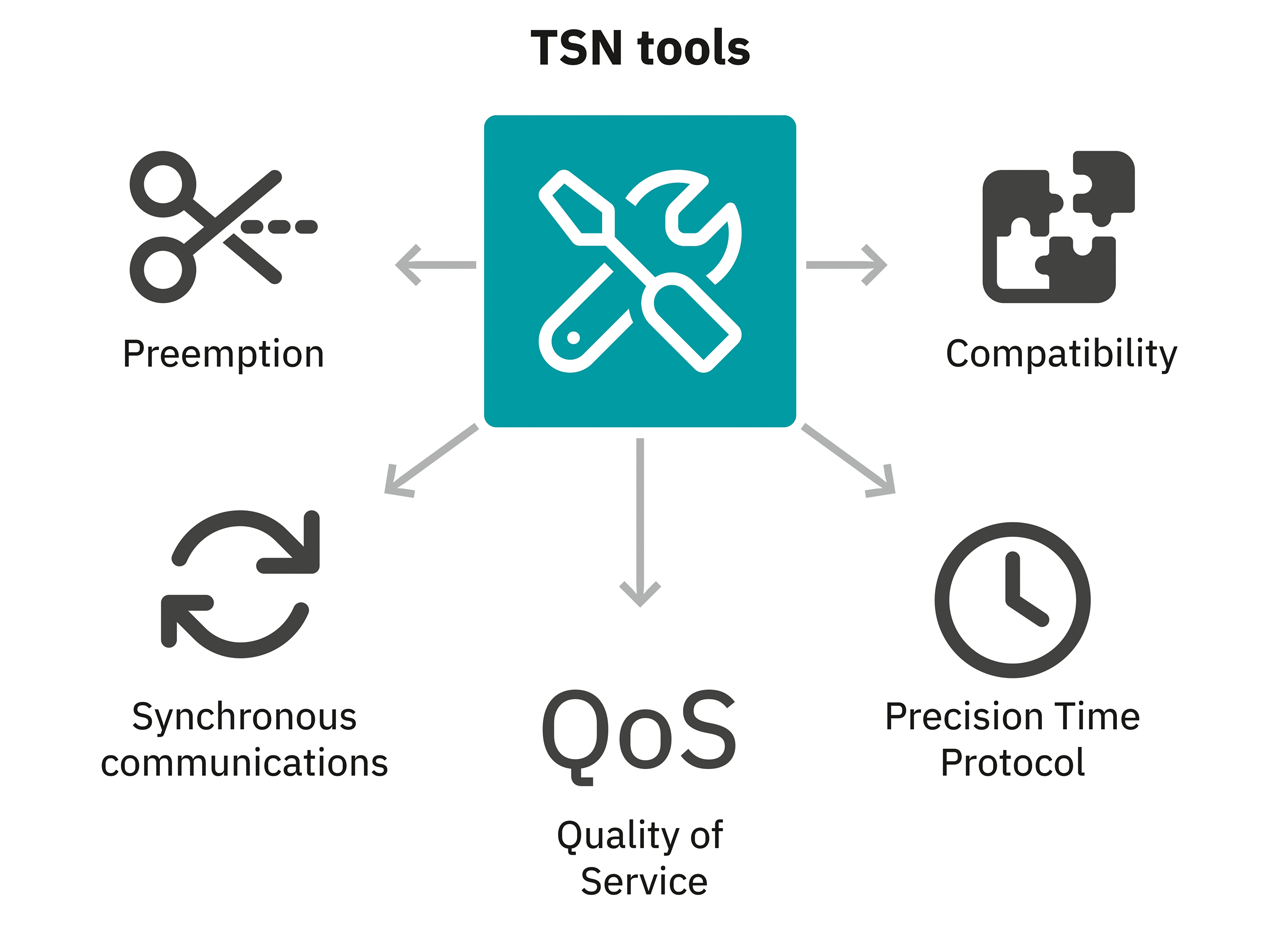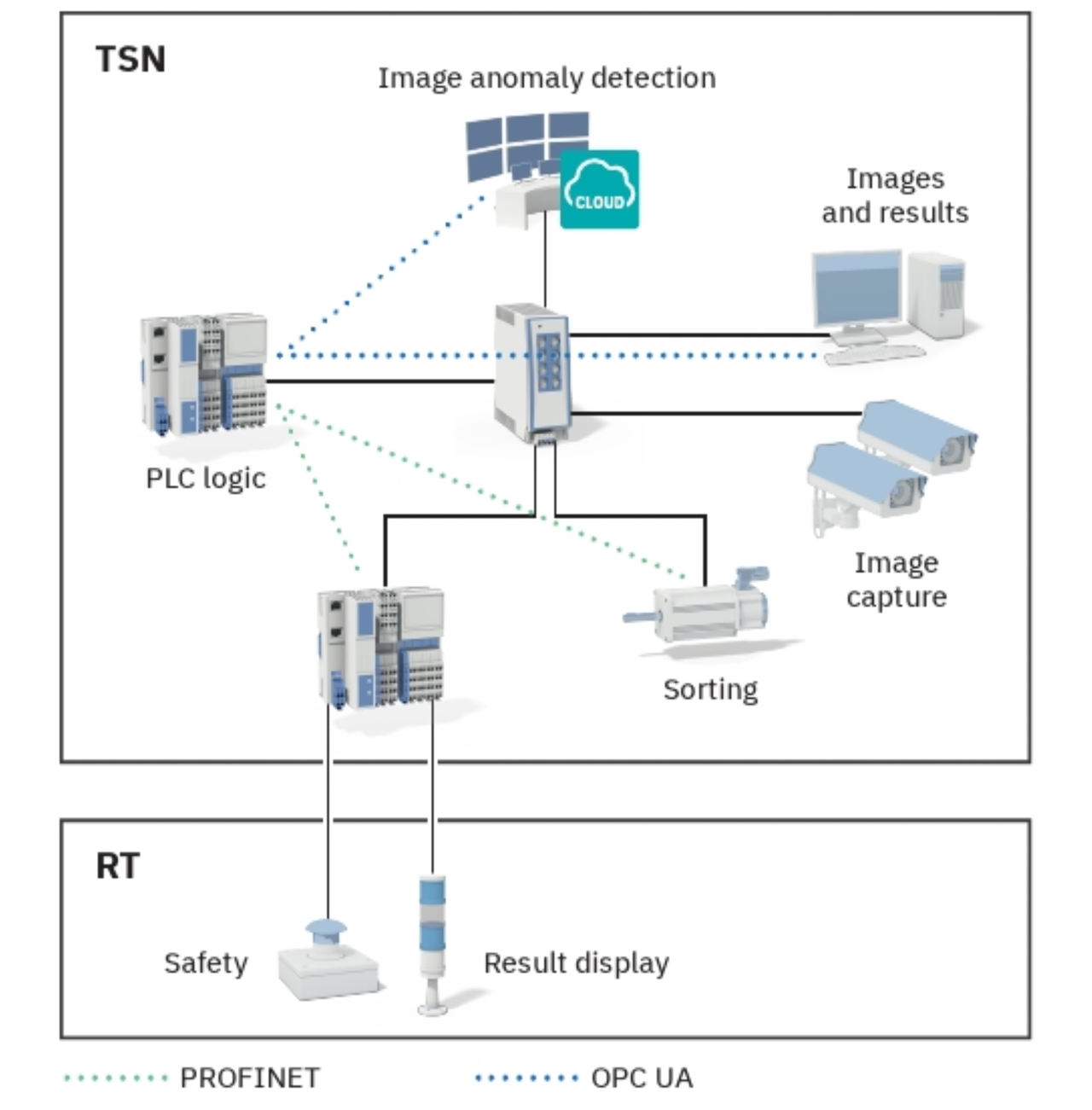TechnologyMarch 22, 2024
The optimal network concept for artificial intelligence

Time Sensitive Networks in combination with Profinet provides mechanisms to form an optimal architecture for AI applications. Compared to separate networks for field communication and IT, there are significant advantages for existing and new applications.
TOGETHER WITH PROFINET, TIME-SENSITIVE NETWORKS (TSN) can be a game changer in automation. However, the following questions need to be answered: What new applications and solutions are made possible? How do TSN standards contribute to this? What does this migration look like? And what will happen to the technology in the future? This article provides answers to these questions.
New technologies can be considered successful when they lead to the implementation of new applications, which have major advantages. One of these new applications is the use of artificial intelligence (AI) in automation. For example, the computing power and tools available for machine learning, image recognition, and data mining are becoming increasingly cheaper and easier to use.
ChatGPT is a good example here. This development is expected to progress at a rapid pace. What requirements does the use of AI therefore place on automation and networking? The following points should be kept in mind:
- Large amounts of data have to be transported from the field to the AI system.
- The result of the AI operation has an effect on the process to be controlled.
- High-precision time synchronization is essential for processing and evaluating distributed data from the field level.
A concept in which all of these requirements can be met in a single network is ideal. Profinet with Time-Sensitive Networking (TSN) is the solution here.
Currently separate networks for fieldbus and IT
At present, the requirements described above are usually implemented in separate networks (See Figure 2). One such example is a camera application for optical anomaly detection using AI tools. At the very least, this requires gigabit infrastructure. However, the fieldbus systems currently in use are often based on a transmission speed of just 100 Mbps and therefore cannot be used to transport this amount of data. High-precision time synchronization is also not currently available in IT networks and systems such as Profinet RT. For this reason, separate networks are often installed for the relevant purpose.

Figure 2: State of the art: separate networks for fieldbus and IT.
The advantage of this separation is that, in principle, IT communication cannot have a negative impact on real-time capability. On the other hand, there are disadvantages such as the effort and costs involved in installing, maintaining, and commissioning separate systems for fieldbus, IT, and synchronization. In addition, future extensions or changes, such as the subsequent installation of new devices, are difficult or impossible to implement.
The example given clearly shows that there is considerable potential for improvement in combining all the necessary functions in a single network. This is usually referred to as a “convergent network” (Figure 3). The most important thing here is that the disciplines of the IT and OT worlds do not affect each other in a shared network. To ensure this, a number of optimizations must be made in the Ethernet structure itself, which together are referred to as Time-Sensitive Networks (TSN).

Figure 3: TSN enables the integration of fieldbus and IT in a shared network.
TSN as a special purpose tool box
It is essential to understand that there is no single mechanism or single standard behind TSN. Rather, TSN can be compared to a tool box containing several tools. Each of these tools serves a specific purpose. The full benefits of a convergent network only unfold when all the tools work together correctly (Figure 4). Here is a brief explanation of the tools:

Figure 4: TSN is not a single standard, but rather a “tool box” of mechanisms that make a shared network possible.
Quality of Service (QoS)
QoS is a well-known concept. Each telegram received at a switch, for example, is sorted into separate memory areas (queues) based on an integrated priority field (VLAN priority), which are reused when sending according to their priority. QoS ensures that real-time-critical traffic is not disrupted by other communication and is therefore the most important tool.
Preemption
Another problem that can occur in a convergent network is the delay of real-time-critical telegrams due to long TCP/IP telegrams. Preemption solves this problem by immediately interrupting a long low-priority packet when a high-priority packet is to be transmitted. The remainder of the low-priority packet that is still to be sent is saved and transmitted later. Preemption ensures that the data forwarding variance at 1 Gbps is reduced to around 1 µs (regardless of the telegram size).
Precision Time Protocol (PTP, IEEE 802.1AS)
Many applications that combine artificial intelligence (AI) require high-precision time synchronization. However, the common synchronization protocol NTP (Network Time Protocol) is not sufficient for this. Synchronization accuracies in the microsecond range can be achieved using PTP because the runtimes on the lines and in the switches are measured and compensated.
Synchronous communication
High-precision time synchronization via PTP also allows the synchronization of communication and applications in the devices involved. Without such synchronization, it is possible for the terminal-to-terminal response time to vary over a wide range, as only one cycle can be missed on the way from the input to the output. Synchronous communication rules this out.
Brownfield integration
Using the tools described above requires new hardware in all the devices involved. That is why TSN will initially only be introduced where there is a significant advantage. Nevertheless, a smooth transition from Profinet RT to Profinet with TSN is feasible in that any existing Profinet device can be used at the “boundaries” of a TSN area. In this way, investments in devices and expertise can be protected. For Profinet with TSN, the listed tools are combined and used together effectively. This results in advantages without changing the look and feel.
Areas of application for Profinet with TSN
The benefits of Profinet with TSN can be explained in concrete terms using optical anomaly detection as an application example (see graphic above).
There are also other applications, such as vibration data for predictive maintenance, 3D images via synchronized cameras, frequency synchronization in the feed-in and load management of alternative power generators, highly accurate time stamps in alarm messages to track a sequence over time, or simply updating large amounts of data, for example in the case of firmware updates, during operation. All applications in which a shared network with time synchronization promises added value are conceivable.
The tools described can be easily used for Profinet communication between controllers and field devices without changing the application view of Profinet. In many applications, data is not only exchanged between controllers and field devices, but also between different controllers.
OPC UA with pub/sub communication is more suitable for this use case. The OPC Foundation is therefore also working on a usage concept for TSN as part of its work on OPC UA Field Exchange. The aim is to share Profinet, OPC UA, and IT data in a convergent network.
Summary
The mechanisms of Time Sensitive Networks in combination with Profinet form the optimal architecture for AI applications. Compared to separate networks for field communication and IT, there are significant advantages for existing and new applications.
Anomaly detection as an application example

Figure 5: Optical anomaly detection: an example of Profinet with TSN mechanisms.
The advantages of TSN can be explained in concrete terms using optical anomaly detection as an application example. An optical quality control system is to be integrated into a continuous manufacturing process for products. Several cameras are used for this purpose, which are located above the passing products, with image capture synchronized to a production product. Due to the speed of production, one camera alone cannot capture a sharp product image. An AI application – located on an edge PC, for example – reads the individual images, compiles them into a complete product image based on the time stamp, and compares this image with a learned “normal”. If the image deviates from this standard, the affected component is rejected in a downstream step (Figure 5).
The following TSN tools prove helpful here:
- Profinet with synchronous communication for production control
- PTP for synchronizing the cameras
- QoS for parallel transmission of real-time and image data
- Preemption to prevent camera data from affecting the latency of real-time telegrams
All of this can be realized in a single network. Future extensions are also possible, as any ports can be used for new devices.


